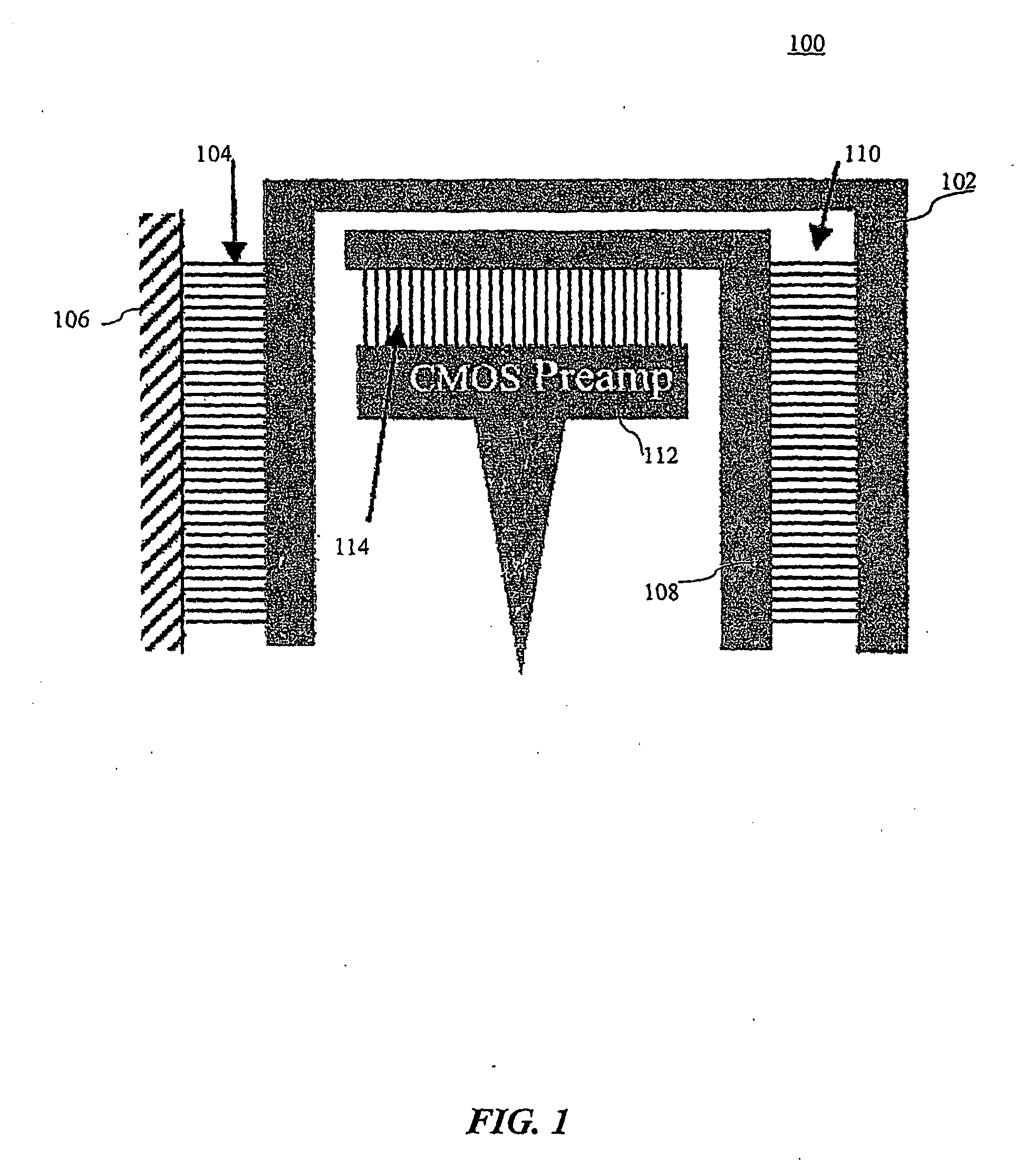Neuralprobe and methods for manufacturing same
- Summary
- Abstract
- Description
- Claims
- Application Information
AI Technical Summary
Benefits of technology
Problems solved by technology
Method used
Image
Examples
Embodiment Construction
[0021]The invention provides a neural probe and related methods for fabricating a neural probe. The neural probe, more particularly, can comprise a micro-machined moveable neural probe that operates according to three distinct modes of operation. The first mode pertains to large-signal motion for “tuning in” to single-unit neuronal activity. The second mode pertains to small-signal motion with an amplifier lock-in to increase signal-to-noise ratios. The third mode of operation pertains to burst small-signal motion for clearing tissue responses.
[0022]Through these distinct modes of operation, a neural probe according to the invention can overcome limitations inherent in conventional devices such as the limited control of probe-to-neuron distance due to the fixed probe length of various types of conventional devices. The neural probe according to the invention can also overcome limitations occurring as a result of the low level—typically only a few microvolts—of signals that are sense...
PUM
 Login to View More
Login to View More Abstract
Description
Claims
Application Information
 Login to View More
Login to View More - R&D
- Intellectual Property
- Life Sciences
- Materials
- Tech Scout
- Unparalleled Data Quality
- Higher Quality Content
- 60% Fewer Hallucinations
Browse by: Latest US Patents, China's latest patents, Technical Efficacy Thesaurus, Application Domain, Technology Topic, Popular Technical Reports.
© 2025 PatSnap. All rights reserved.Legal|Privacy policy|Modern Slavery Act Transparency Statement|Sitemap|About US| Contact US: help@patsnap.com



